We are proud to sponsor ECO Magazine’s special issue on Ocean Sound, which also contains AutoNaut Ltd’s Phil Johnston writing a great article on “Marine Robots for Passive Acoustic Monitoring”.
We’re on BBC Spotlight
Here we are on BBC Spotlight talking about our work with The Ocean Cleanup.
The Ocean Cleanup Environmental Monitoring results are now available
Our Seiche PAM buoys, marine mammal observers, technicians and AutoNaut Unmanned Surface Vessels have been busy helping The Ocean Cleanup with its Environmental Monitoring programme.
Take a look at the results of the first mission and watch the video showcasing our collaboration here.
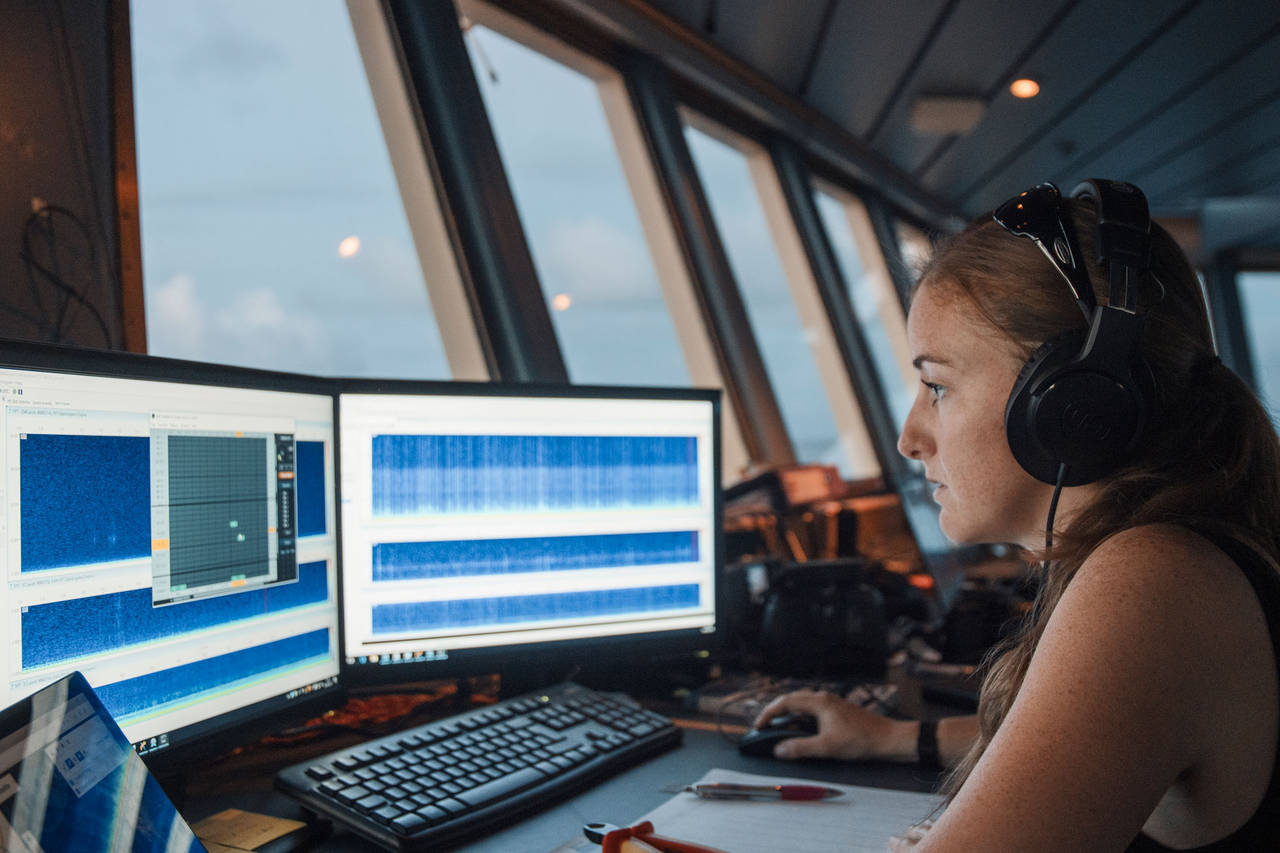
University of Bath and Seiche KTP programme success
We are proud of our long-standing relationship with University of Bath, working together on their Knowledge Transfer Partnership (KTP) programme. Philippe Blondel and Mark Burnett discuss here.
AutoNaut to launch new 3.5 Metre Communications Hub USV
Click here to read the Ocean News & Technology article on the launch of the new 3.5 metre AutoNaut USV at Ocean Business 2019, taking place at the National Oceanography Centre, Southampton, from the 9th to the 11th of April 2019.
ORCA and Seiche Training announce innovative new training course
Seiche Training is pleased to announce a partnership with ORCA, one of the UK’s leading marine conservation charities.
Building on the sector-leading Marine Mammal Observer (MMO) programme Seiche Training has been running for a number of years, the two organisations have now developed an innovative new training package that integrates ORCA’s decades of experience monitoring marine mammals.
The three-day residential programme combines classroom-based learning with at-sea practical training, giving participants the theoretical skills needed to work as an MMO before putting it into practice observing real animals in the wild.
The course will produce a new generation of highly skilled MMOs that will not only have all of the technical skills needed to fulfil this crucial role, but will also have been exposed to a leading conservation organisation, giving them a crucial perspective on the key factors affecting whales and dolphins in UK and European waters.
Speaking about the new programme, ORCA Head of Science & Conservation, Lucy Babey, said: “This training course highlights how well respected ORCA’s work is in the wider scientific community, and we are thrilled to be working with Seiche Training to allow for a joined-up approach in creating safer spaces for whales and dolphins. We know from experience that there is no substitute for this type of at-sea experience.”
Sarah Hancock from Seiche said: “We are very excited to be building on our established course content by including the breadth of marine conservation knowledge brought by ORCA.”
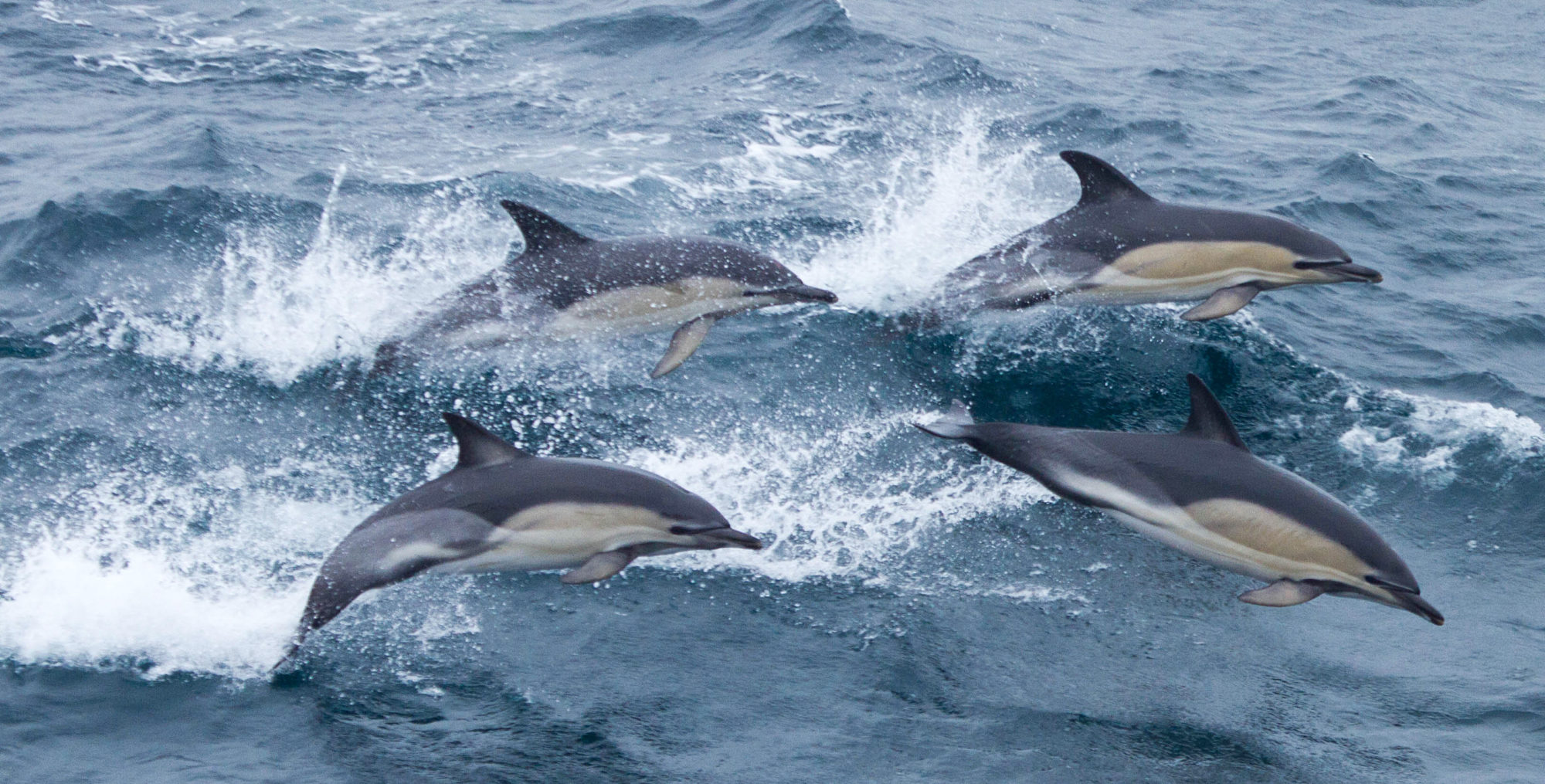
The course commences with a one-day classroom-based session in Portsmouth before crossing to Santander, passing through one of the top five places in the world to see whales and dolphins – the Bay of Biscay – with the time at sea spent applying the technical skills on deck and observing marine mammals.
Two trips have been announced for 2019: 30 April to 2 May and 9 July to 11 July. The package includes the full training programme, passage aboard the ship and a single occupancy cabin. Places for this unique course are extremely limited and applicants should email Sarah Hancock at: info@seichetraining.com to find out more and apply.
ORCA is one of the UK’s leading marine conservation charities with a mission to give everyone who cares about whales and dolphins an active role in safeguarding their future. ORCA has coordinated a national network of volunteer citizen scientists since they were founded in 2001, using ferries and cruise ships as platforms of opportunity to collect critical data about whales, dolphins and porpoises.
ORCA’s research is used by government to inform UK and European marine conservation policy and ORCA is a key voice in the UK marine conservation sector. This work culminated in the launch of the annual The State of European Cetaceans report in 2016, which analyses ORCA’s data to identify critical habitats for whales and dolphins. The State of European Cetaceans 2018 report can be found in full at www.orcaweb.org.uk/soec
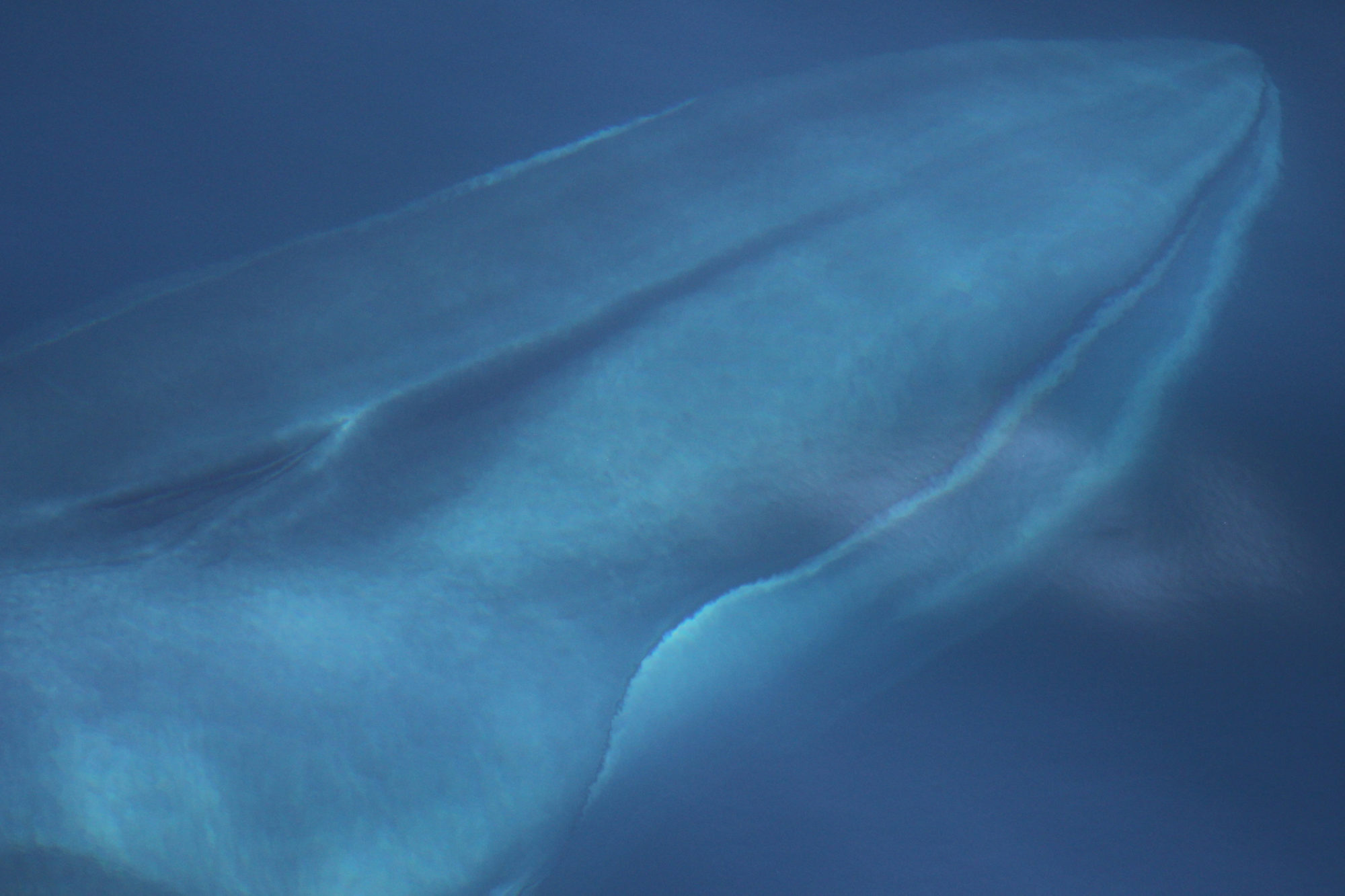
BBC Radio 4’s Inside Science features AutoNaut in icy conditions
Listen here to the BBC programme (from 17 minutes in) where Hannah Fisher goes to see an AutoNaut unmanned automated vessel being tested in icy conditions.
The remotely-operated vessel will be used to explore uncharted waters around Antarctic ice sheets to collect data on ice-melt and sea-level rise, but first it needs to have a coating that won’t ice up.
Seiche COO, Mark Burnett, talks at the Marine Autonomy and Technology Showcase
Key presentations were given by Seiche Water Technology Group at the National Oceanography Centre in Southampton last week:
“Smart onboard processing of visual imaging from a small Unmanned Surface Vessel (USV)” was presented by Mark Burnett on an Innovate UK and National Oceanography Centre collaboration.
“Commerical off the shelf UUV for ASW” was given by Robin Campbell, Qinetiq featured Seiche’s digital array and Iver UUV.
“Developing AutoNaut USV for Operations in the Arctic/Antarctic Environment” was presented by Karen Heywood, University of East Anglia.
“Operating around Hazards and Safe Manoeuvring by AutoNAut USV” was given by AutoNaut’s Phil Johnston and Pete Bromley.
On display in the main conference hall was Caravela, the University of East Anglia’s new boat, which will launch a seaglider under the Antarctic sea ice.
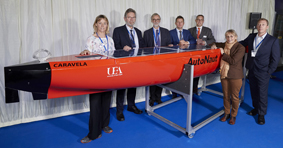
AutoNaut USV accompanies The Ocean Cleanup in the Pacific Ocean
An AutoNaut unmanned surface vessel (USV) has been launched alongside the revolutionary system of The Ocean Cleanup, the non-profit organisation deploying advanced technologies to rid the world’s oceans of plastic. The Ocean Cleanup System 001, also known as “Wilson”, is undergoing extensive sea trials approximately 350 nautical miles from San Francisco, to test the behaviour of the system. If all goes well, it will relocate to the “Great Pacific Garbage Patch” (GPGP) where it will begin the challenge of removing tonnes of plastic debris. The role of the AutoNaut USV is to conduct long-term monitoring of the surrounding environmental conditions and provide information on “Wilson” itself.
The AutoNaut USV is operating directly alongside The Ocean Cleanup’s at-sea garbage-collection system. The small autonomous craft is overseen remotely by an operator at sea and a small team based on the south coast of England. Cameras on the AutoNaut’s mast and hull provide a live-feed view of “Wilson” both from above and below the sea surface. Onboard sensors provide a scientific understanding of the environment by measuring the sea surface waves, oceanic currents, water quality and weather conditions.
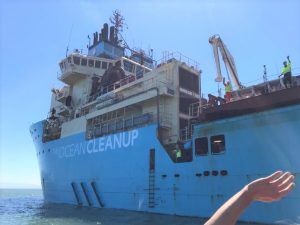 A send-off from San Francisco was seen live by viewers around the world who watched the Maersk Launcher tow The Ocean Cleanup “Wilson”, with AutoNaut on deck, under the Golden Gate Bridge. The next stage after this first two-week trial is to re-locate further offshore to the GPGP where the aim of the project is to remove 50% of ocean plastics every 5 years.
A send-off from San Francisco was seen live by viewers around the world who watched the Maersk Launcher tow The Ocean Cleanup “Wilson”, with AutoNaut on deck, under the Golden Gate Bridge. The next stage after this first two-week trial is to re-locate further offshore to the GPGP where the aim of the project is to remove 50% of ocean plastics every 5 years.
“We are thrilled to be playing a role in Boyan Slat’s vision” said Phil Johnston, BD at AutoNaut, “The AutoNaut uses only wave-power for propulsion and solar energy for sensors – so these are two very elegant, renewably-powered systems working together for an environmental cause.”
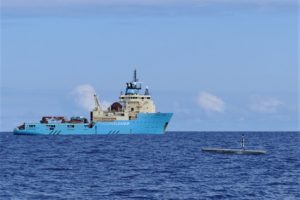
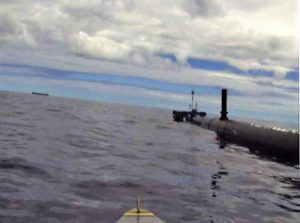
The Ocean Cleanup – countdown to launch!
On September 8, The Ocean Cleanup will launch the world’s first ocean cleanup system from its assembly yard in Alameda, through the San Francisco Bay, toward the infamous Great Pacific Garbage Patch. To celebrate this historic moment, you can watch the deployment live. The livestream will be available, starting at noon PDT/3 pm EDT/9 pm CEST. CLICK HERE.
